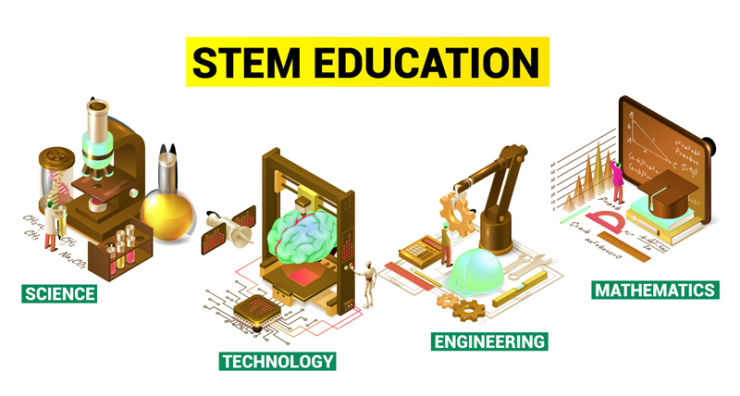
Technology is a headwind for mid-career workers, but might also be their salvation
Unemployment has long been an issue, especially since the 2008 financial crisis turned economies and labor markets on their heads
With the unexpected arrival of the pandemic in 2020,¬Ýthe sudden shock to the world economy brought unemployment¬Ýeven higher up government agendas.¬ÝYet, following¬Ýan initial increase in unemployment and temporary furlough schemes at the outbreak of the pandemic, recent¬Ýnews of companies struggling to fill vacant positions,¬Ýthreatening to¬Ýslow economic¬Ýrecovery, while seemingly counterintuitive, have become widespread.
While the pandemic’s effect on the supply of workers will abate over time, it should alert us to a gradual, but even more critical development in the labor market well underway – the . A natural consequence of rapid technological progress is that skills learned in workers’ formative career years become obsolete much faster and job seekers lack the skills required to work in the areas where employers are most in need. Combined with much longer professional lives and a 20th-century educational system, it is hard to deny the clear gap between the supply and demand of skills in the labor market.

In a¬Ý2020¬Ý, nine in ten managers stated their companies were either already dealing with skill gaps,¬Ýor expected¬Ýthem to develop¬Ýskill-related staffing¬Ýproblems¬Ýin the¬Ýnext five¬Ýyears.¬ÝAs the¬Ý¬Ýreport¬Ýnotes,¬Ý‚Äúthe share of core skills that will change in the next five years is 40%, and 50% of all employees will need reskilling.‚Äù
The scale of the challenge is hard to underestimate
This situation is particularly severe in the aging societies of the most developed markets, such as the US, the UK, and Western European countries. The skillsets most in-demand relate to the new work environment shaped by digital transformation, where STEM skills are indispensable to all WEF’s top-ranked 10 jobs of ‘tomorrow’ – from digital fitness to ocean tide engineering.

Indeed, as the pandemic forced global workers online, the digital divide became even¬Ýclearer. Business consultancy¬Ý¬Ý‚Äúby¬Ý2025, Germany is expected to have a shortage of some 280,000 people with STEM qualifications‚Äù¬Ýand US companies¬Ýtook up to 66 days¬Ýto hire a new tech employee in 2019 ‚Äì 20 days longer than any other type of hire.
Gen X workers often face the hardest challenge. While global trends digitizing work require workers to adapt to new activities and routines, in contrast to the younger, digitally native generation ‚Äì more seasoned workers in OECD countries can¬Ý.
One of the few ways out of this predicament is upskilling
Recently, the business community started to focus more on investing in workers’ mid-career education. The creation of a functional multi-generational workforce, , could “raise GDP per capita by almost 19% in three decades.” Companies like Guild Education in the US, now reportedly valued at over $3.7 billion after their latest $150 million raise, focus on connecting employers with universities; to upskill their workforces. Allocating $1.2 billion from its balance sheet to invest in retaining its talent, tech-giant Amazon now offers to pay for its employees’ college tuition and other education costs.
While in-house upskilling is an option firms pursue in increasing numbers, devoting the resources to develop efficient processes can prove difficult. Shifts in the company landscape accompanying the digital transformation, mean some companies are ill-suited to provide the skills, which are in high demand, to their employees.
A solution is available in digitalisation itself. EdTech companies providing virtual upskilling and reskilling courses and services have the ability to reach different demographics and professions with precision, providing the much-needed means for experienced workers to catch up with new work environment demands.
EdTech companies also cater to workers who have become unemployed in the current tight labor market and are looking to add new skills to their CVs. By employing a business model transcending traditional company demarcations, they can perform a crucial function in creating the labor market of tomorrow.
The Future of Work report clearly articulates that the disruptions of digital technology, deepened by the pandemic, are already beginning to take effect
“The window of opportunity to reskill and upskill workers has become shorter in the newly constrained labor market,” the report reads. If we miss the moment to act on the developing skill gap, significantly higher unemployment among experienced workers is likely over the next five to ten years.
We must change the way we think about mid-career education. The labour market of the future will not¬Ýallow for¬Ýresisting technological innovation. However, it might offer new opportunities for both workers and companies that embrace its dynamism.
One way of transcending and closing the skills gap globally is via a competency-based education that provides graduates with more than just three letters. And with more global learners moving their learning online to procure those skills that are in high demand with current employers, modern universities such as …´ø‚TV, will become a more and more attractive destination for the tech-savvy many.
Ready to get started? Download our brochure or book a call with our friendly …´ø‚TV Advisors!

Fadl is Founder & CEO of …´ø‚TV. His vision is to enable greater social and economic mobility through high-quality, affordable education.
Join our newsletter and be the first to receive news about our programs, events and articles.